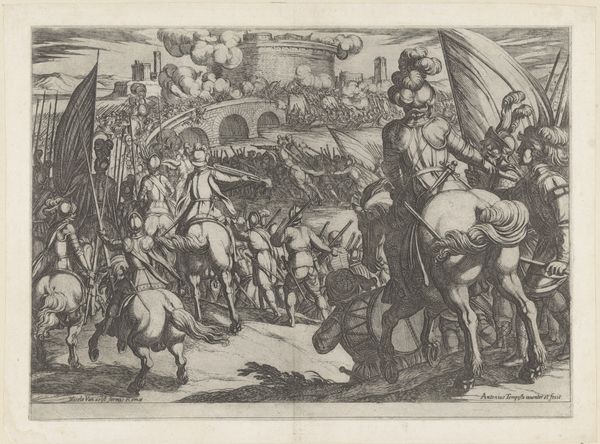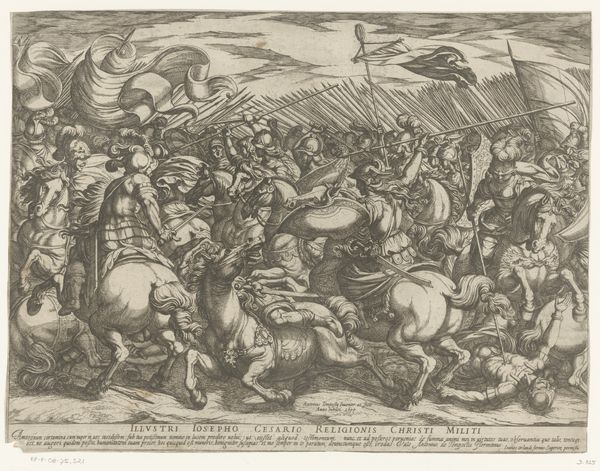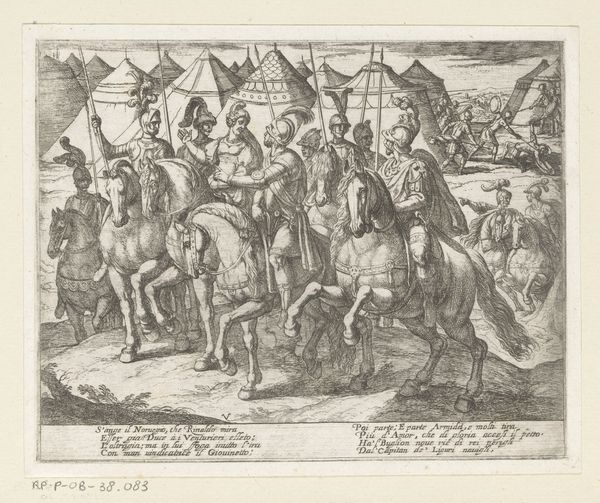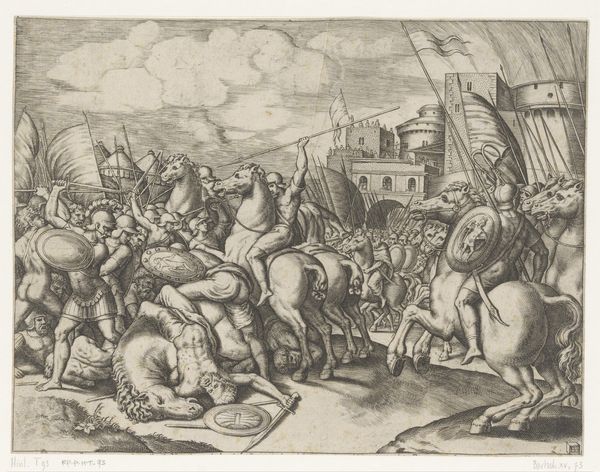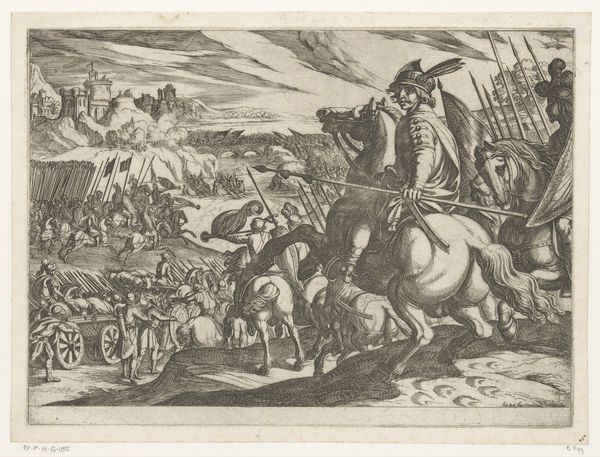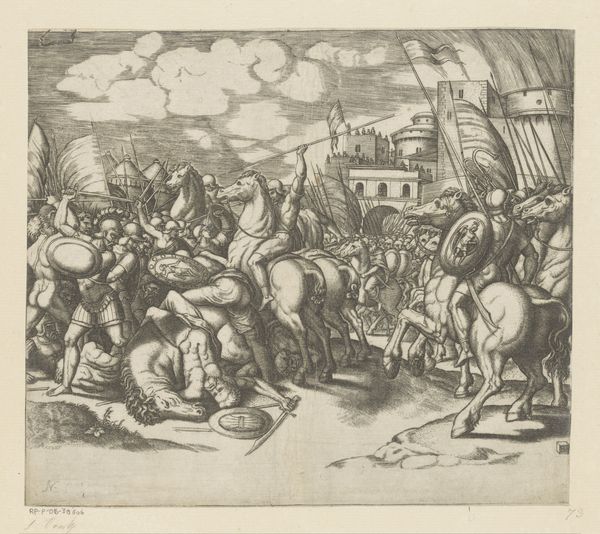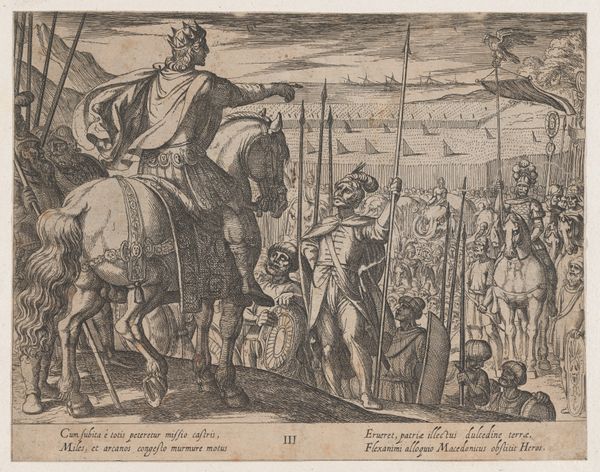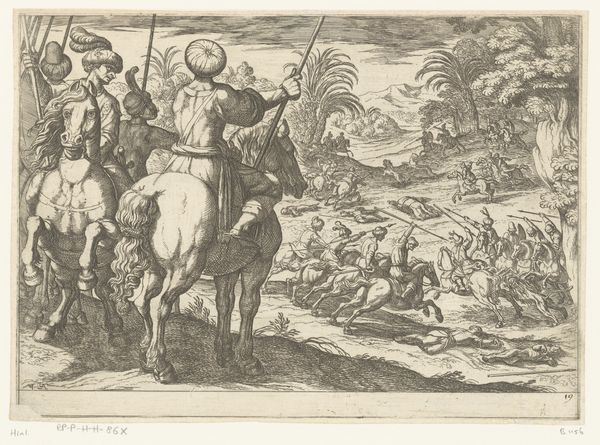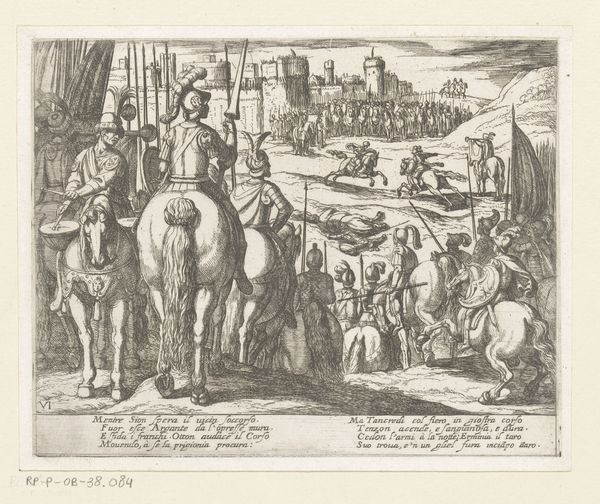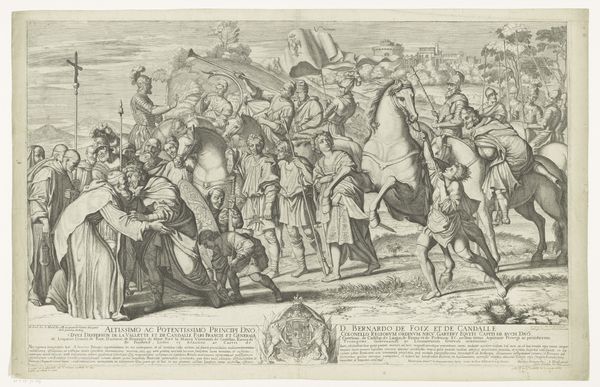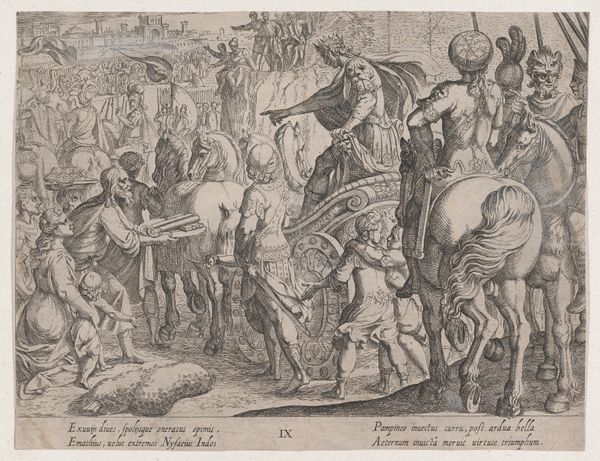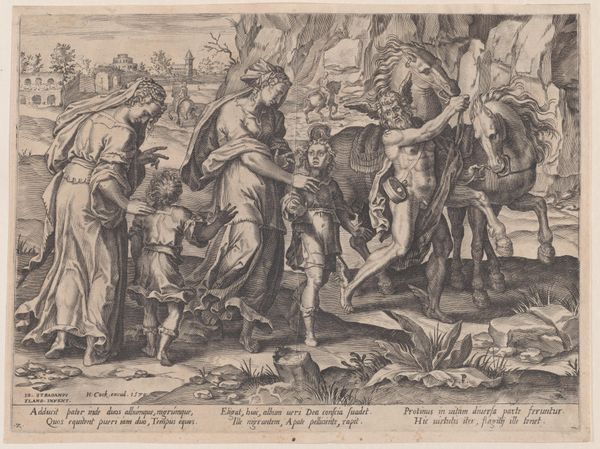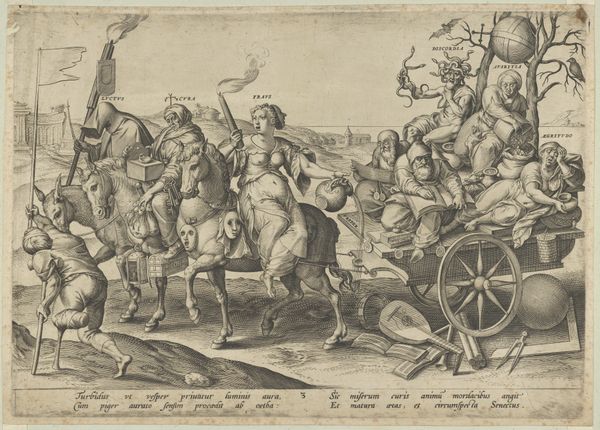
print, engraving
#
ink drawing
#
narrative-art
# print
#
classical-realism
#
figuration
#
11_renaissance
#
history-painting
#
academic-art
#
engraving
Dimensions: 7 7/8 x 9 7/8 in. (20 x 25.08 cm) (sheet)
Copyright: Public Domain
Editor: So, this is "The Triumph of Scipio," a 16th-century engraving, artist unknown, residing at the Minneapolis Institute of Art. There's a strong classical feel to it, and I’m struck by how densely packed the composition is. What grabs your attention when you look at this piece? Curator: What I see is a visual document of power relations encoded in the very act of production. Engravings like these were reproducible, functioning almost like propaganda. How does the artist's choice of engraving—a readily replicable medium—affect the consumption and understanding of Scipio's triumph? Was it meant for a wider audience, solidifying a particular narrative of Roman power? Editor: That's an interesting point. I hadn't considered the material itself as contributing to the message. Were there other readily reproducible visual depictions of such triumphs that could potentially disseminate an alternative representation of such triumphalist depictions? Curator: Exactly! Consider who commissioned it, the labor involved in creating the engraving, the paper it was printed on. The Roman triumph wasn’t just a military parade; it was a performance deeply embedded in social and economic structures. It demanded immense resources, and the image itself participates in this economy of display. Do you see any ways in which the depicted commodities—arms, armor, chained slaves—reveal information on the relationship between labor, commerce and imperialism in the late Renaissance, early Modern context? Editor: Looking closer, I realize the print *is* the product of labour - and therefore represents commodities for sale and exchange as well! I guess I was only thinking about the people. The detail really brings out the cost of empire and conquest. Curator: Precisely. The Triumph is more than a record of an event, but also an economic process: the artist's work, and the act of production reflect not only the content itself, but also point at the cultural, financial and even intellectual dynamics of their own time. Editor: Okay, so analyzing the materials and means of production offers a fresh perspective beyond just the subject matter. It is much richer now for me. Thanks for unpacking that! Curator: My pleasure! I've learned more about how artistic interpretations inform historical discourse, while contextualizing the impact and circulation of "triumph".
Comments
No comments
Be the first to comment and join the conversation on the ultimate creative platform.

